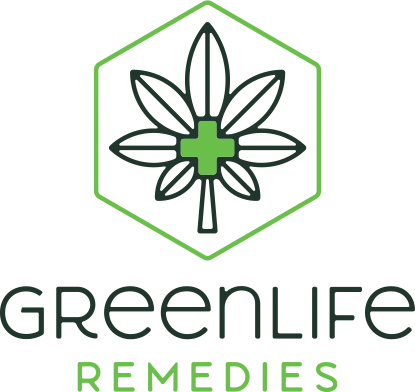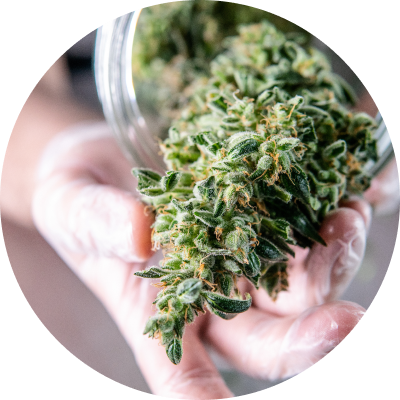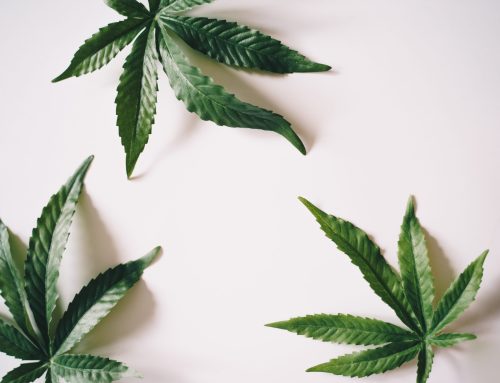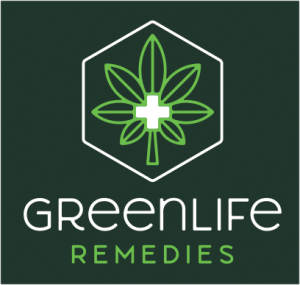Did you know that THCA flower has become possibly the most sought-after product that has come out of the hemp industry? If you didn’t, now you do, and it’s easy to understand why. THCA flower basically mimics weed more than any other legal product out there, and that has been a godsend to cannabis lovers who live in states with strict marijuana restrictions.
For many years now, the medical marijuana market has been thriving, with a number of patients using the plant specifically for pain relief. Given the similarities between THCA flower and weed, a lot of people are asking whether or not this hemp product is capable of offering the same level of relief to those dealing with different types of pain. Unsurprisingly, perhaps, the answer is yes, and we’re going to explain why, while offering plenty of tips to help you get as much of that specific benefit out of this relatively new product.
What is THCA Flower?
First, although THCA flower is already a top-selling product on the hemp market, a lot of people aren’t totally clear as to what it is, or how it’s made. So, let’s break things down. THCA flower refers to the raw flowering buds of the female hemp plant, which are naturally rich in hundreds of cannabinoids and terpenes, with cannabinol (CBD) being the most abundant compound in the composition. For those who need a refresher, CBD is the nonintoxicating cannabinoid renowned for its stunning array of potential benefits – including pain relief.
Hemp flower can be fantastic on its own, and so, could offer relief to countless individuals. But, THCA flower takes things a step further by infusing the flower buds with THCA distillate. THCA is the raw precursor cannabinoid to delta 9 THC, which becomes delta 9 once it’s heated – as flower is heated, through smoking, vaping, baking, etc. As a result, THCA flower gives you a generous amount of delta 9 THC once it’s used – the same delta 9 that acts as the dominant chemical compound in weed.
Hemp flower only yields about 0.3% delta 9 THC, give or take, naturally. That’s not nearly enough to give users the potential benefits of delta 9 – nor its high – and so hemp flower is classified as nonintoxicating. THCA flower is intoxicating, since the THCA inevitably becomes delta 9 when in use.
So, just how intoxicating is THCA flower? Well, that depends on how much THCA distillate has been added to the product. The large majority of companies will add THCA distillate in the concentration in which delta 9 would exist in that same strain. For example, if a weed strain yields about 24% THC, that same strain in hemp form would be infused with enough distillate to contain 24% THCA.
Now, for those not sure what THCA distillate is, it’s simply a purified THCA extract, produced using steam distillation. Most companies offer between 97-99% purity with their distillates.
Is THCA Flower Legal?
THCA flower does, in fact, comply with federal law – surprising, right? That’s because federal law (2018 Farm Bill) clearly reads that all hemp products may be sold legally, if third-party testing shows that they contain a maximum of 0.3% delta 9 THC. The active compound in THCA flower isn’t delta 9, but THCA. There are no limits when it comes to the amount of THCA that may be in the product, even with the knowledge of the fact that THCA turns into delta 9 through a simple heating process.
Now, despite the fact that THCA flower is legal under federal law, it is banned in some states. Some states have banned THCA products, while others have banned smokable products – aka flower. As of now, THCA flower is banned in:
- Alaska
- Hawaii
- Idaho
- Louisiana
- Minnesota
- Mississippi
- Montana
- Oregon
- Rhode Island
- Utah
Keep in mind that this is a new product, and other states may ban it soon as it becomes more popular. Please keep an eye out for any changes in hemp laws in your state.
THCA, Delta 9 THC, and the Endocannabinoid System
To appreciate the way in which THCA flower can offer pain relief, we need to understand the relationship between cannabinoids and the endocannabinoid system. In every mammal is an endocannabinoid system, which consists of endocannabinoids (cannabinoids produced by the body), enzymes, and cannabinoid receptors. Cannabinoid receptors are found throughout the entire body, and each one has the job of regulating a bodily process.
There are two categories of cannabinoid receptors: CB1 receptors, in the brain and nervous system, and CB2 receptors, in the nervous system, digestive system, and immune system. Cannabinoid receptors require cannabinoids in order to enable these regulatory effects, which involves a process in which cannabinoids bind to the receptors to produce a chemical reaction.
THCA flower, again, actually provides the user with delta 9 THC. Delta 9, being a cannabinoid, is used by the endocannabinoid system to regulate a vast array of bodily processes, and that’s why the cannabinoid is associated with so many potential benefits. Of course, delta 9 also engages the CB1 receptors in the brain that produce a high, which is something that makes it unique from CBD.
The cannabinoids in cannabis are fully utilized by the endocannabinoid system, and hemp contains about 113 known cannabinoids in its flowers. Each one interacts with cannabinoid receptors in a specific way, offering different potential benefits felt all throughout the body. In other words, delta 9 is not the only cannabinoid in the plant that’s potentially benefiting users in an abundance of ways.
THCA for Pain Relief: What Can it Provide to Those Living in Pain?
THCA is short for tetrahydrocannabinolic acid, and like we said, it’s the raw precursor to delta 9 THC. THCA turns into delta 9 via a process known as decarboxylation – allowing the cannabinoid to surpass a specific temperature to change its chemical structure, and thus how it behaves when interacting with the endocannabinoid system. Before THCA becomes delta 9 THC, it offers surprising benefits, through its relationship to anandamide, an endocannabinoid that regulates serotonin levels in a way that can improve symptoms related to inflammation, appetite, nausea, mood, sleep, and more.
But again, THCA flower doesn’t give the user THCA, but rather delta 9 THC, since flower must be decarboxylated for use – like, for instance, by smoking it. And, delta 9 THC has been researched for several decades for its various potential benefits.
Delta 9 THC, aka delta-9 tetrahydrocannabinol, is the dominant compound in marijuana, and therefore it plays a large role in the effects that we get from weed. We all know about THC’s high, but that’s not the only thing that the compound is good for, as evidenced by the success of the medical cannabis market.
Delta 9 can even offer loads of potential benefits including:
- Stress relief
- Help with focus and concentration
- Relief from low mood
- Aid in sleep
- Neuroprotective/anti-seizure properties
- Appetite enhancement
- Relief from nausea
But, what we’re focusing on today is pain relief, and as it turns out, a lot of studies have found a clear correlation. One of most common ailments for which cannabis is prescribed is chronic pain. And, this is achieved through two separate channels.
Delta 9 THC works with CB1 and CB2 receptors in the body, to regulate a uniquely wide variety of physiological processes. Two processes that it focuses on are inflammation, which is a vehicle of the immune system, and pain tolerance, which is managed through the nervous system. What this means is that THC acts as both an analgesic and anti-inflammatory, to address pain in two different ways. And, a multitude of studies have shown that delta 9 is particularly effective when it comes to providing pain relief, in a way that can offer substantial therapeutic value.
Does the Strain of the Flower Matter?
Let’s talk about another important factor: the strain of the THCA flower. The strain refers to the cultivar of the plant, as each strain has a unique composition of chemical compounds – specifically, cannabinoids and terpenes. The terpenes in the plant also play a big role in the potential benefits of THCA flower. Terpenes are compounds found in all plant species, and they determine the flavor and aroma of the plant, as well as a number of its properties. Certain terpenes are more geared toward pain relief, like linalool, pinene, limonene, myrcene, and beta-caryophyllene.
When aiming to address pain relief, you want to really explore the variety of flower products out there. This means looking up the strains that are being offered, to find out which ones are particularly known for their pain-relieving properties. Luckily, this is super easy to do nowadays, as there are plenty of online databases that allow you to search for a specific strain and find out its dominant benefits and compounds.
The key is knowing that there are strains out there that are more likely to provide pain-relieving effects than others, so don’t settle until you find one that is known for that. Traditionally, indica strains have been more suitable for pain, since they generally have higher levels of myrcene and linalool, two terpenes known for alleviating physical discomfort. But, there are always indica and hybrid strains that happen to have the perfect composition of compounds to provide a profound level of physical relief, as well.
If you need a little more guidance, let’s take a look at some strains that are highly rated for chronic pain.
- Bubba Kush: An all-time classic, this indica is like a sedative for most users, and it can offer head-to-toe relief on a profound level.
- Suver Haze: Suver Haze is a legendary hybrid that leans toward indica, with effects known to make users feel sleepy, mellow, and free of physical discomfort.
- Tahoe OG: Another member of the Kush family, Tahoe OG is particularly geared toward those seeking out pain relief, it’s a great nighttime strain due to its sleepy, tranquilizing nature. It’s also known for being super euphoric, which is great for a person’s mood.
- Skywalker OG: An indica-dominant hybrid, this strain is great for those with mood disorders, but its amazing body high is just as wondrous as its cerebral effects.
- Mango: Named for its delicious fruity flavor, Mango is an indica that has been on the market for ages. It’s a go-to among chronic pain patients exploring the medical marijuana market.
Are There Any Side Effects to Look Out for?
Of course, if you’re going to be potentially using something every day for pain relief, you want to get a good idea of its potential for side effects. First off, let’s make one thing clear: there is no real medical danger associated with cannabis products. Cannabis is natural, and nontoxic to the body, which is why you’ve never heard of anyone dying from taking too much of it.
But, of course, there are always side effects to consider with anything we take, no matter how mild or short-lived. The most commonly reported side effects associated with THCA flower, which really come from the delta 9 effects in the flower, include:
- Dry mouth (cottonmouth)
- Dry, bloodshot eyes
- Increased appetite
- Reduced blood pressure
- Increased heartrate
- Dizziness/lightheadedness
- Grogginess
- Brain fog
- Anxiety/paranoia (from getting too high)
These side effects pass within a few hours, and thus, are generally not cause for real concern. So, the good news is that you can enjoy THCA flower, even in higher doses, without really worrying about real negative consequences.
How to Dose with THCA Flower
When it comes to dosing with THCA flower, the key is making sure that you’re getting enough of the product to get the desired results, but not so much that you end up more intoxicated than what you’re comfortable with. We recommend that beginners start slow, because those who have a low tolerance to THC are more likely to get very high, which could lead to feelings of anxiety and paranoia. These feelings do pass fairly quickly, but at the same time, they can be avoided by simply going with a lower dose as you work up your tolerance over time.
So, what is a good dose for THCA flower? We always suggest that total beginners start with 1 puff if they’re smoking or vaping the flower, or 10mg if they’re eating a homemade edible made with flower.
Take note that with each delivery method is a unique onset time. With inhalable methods, you’re going to likely feel the effects within 20 minutes. So, after about 30 minutes, you can decide if you want some more. With edibles, it can take up to 2 hours before the effects kick in, so give it that amount of time before considering a second dose.
Over time, you should expect your tolerance to increase. That’s how THC works – the more frequently you use it, the more your cannabinoid receptors become used to the response and stop reacting so strongly to it. Build up your tolerance gradually, to make sure you don’t get so intoxicated that it causes discomfort.
How to Find High-Quality THCA Flower: Things to Look for
Now, THCA flower is more widely available than ever before, but that doesn’t mean that all of it is worthwhile. A lot goes into producing THCA flower that’s safe, high in quality, effective, and fresh. So, how can you tell that you’re getting the good stuff? Here’s what to pay attention to.
- Lab Reports: The third-party lab reports that come with THCA flower show you a lot of critical information about how safe and high-quality the product is. These lab reports are required to be performed for all hemp products, and come from a state-licensed laboratory. Read carefully to learn about how the product’s purity levels check out, how much THCA is in the flower, and the breakdown of chemical compounds present. Also, you’ll find a safety profile of the product, based on things like contaminants, heavy metals, and other impurities.
- Reviews from Users: Always read through the reviews of a product before buying, because you’ll find out quickly if other customers are satisfied or not with what they’ve gotten. You’ll also be able to find out what people have to say about a particular THCA flower’s ability to help with pain, specifically.
- Organic vs. Conventional: Organic hemp flower is always the way to go, since it’s free of pesticides and other environmental toxins that no one wants to be breathing in.
- Turnover Rate: Find a company that has a fast product turnover rate, to ensure that the flower is always sold fresh. Flower breaks down with age, being fresh for only about 6 months before its compounds are no longer viable. The faster the turnover rate, the more likely it is that the flower hasn’t been sitting around for long.
- Strain Selection: Of course, you want to choose a company that has a good choice of strains, because you’re seeking out something very specific, which is pain relief. Don’t settle for a brand with such a limited choice of strains that you’re unlikely to get the specific effects you’re looking for.
- Transparency: Lastly, buy from a company that’s generally transparent with customers, as this makes them far more trustworthy. A brand that discloses where their flower is sourced from, the percentage of THCA in the product, and other important details is more likely to be delivering top-shelf flower.
What if I’m Taking Pain Medication?
Something that we get asked often is whether or not it’s safe to use THCA flower if you’re taking medication for pain. At the end of the day, that’s something that only your trusted medical provider can answer, as it depends on far too many individual factors for us to be able to provide personalized guidance.
But, one thing to remember is that cannabinoids do suppress the CYP3A4 enzyme, which breaks down many popular medications – including those prescribed for pain. In rare cases, taking a cannabis product with a pain medication could prevent the latter from metabolizing, leading to a potentially dangerous buildup in the bloodstream. Again, this is very rare, but it’s worth talking about with your doctor.
How Often Can/Should I Use THCA Flower?
If you’re looking at THCA flower specifically for pain relief, it’s important to know that the benefits in that area are cumulative. In other words, using flower as part of a daily routine is recommended, to build up the level of cannabinoids in the body so that the endocannabinoid system can use them as effectively as possible.
Is it Better to Smoke, Vape, or Cook with THCA Flower for Pain Relief?
We touched upon the different ways to use flower: smoking, vaping, or making edibles. So, which is best for pain, specifically? Smoking flower is likely to give you the most potent results, which kick in within about 10-20 minutes, depending on the strain and dosage. The effects last typically for 3-4 hours at most, with the strongest effects for 1-2 hours.
With vaping, the onset time and duration of effects is the same, but vaping may produce ever-so-slightly milder effects. Vaping is also easier to inhale, in that it’s less likely to produce coughing, and easier to travel with.
Lastly, we have edibles. Making edibles with flower is obviously a more time-consuming process, but it’s worth it to many. First, you infuse the flower into butter or another fat for cooking/baking, and then you make a recipe using that infused fat in place of the fat in the recipe. With edibles, the onset time is longer – 2 hours or so – but the effects last for up to 8 hours. Plus, edibles may offer more pain relief because of how this delivery method produces stronger effects within the body.
GreenLife Remedies THCA Flower: Taking Your THCA Experience to the Next Level!
If you’re ready to explore the potential pain-relieving properties that you can get out of THCA flower, it’s time to explore the collection of GreenLife THCA Flower products. We supply an amazing array of strains, including many that are renowned for their pain-relieving properties, all while promising nothing but the freshest, highest-quality product possible. Our flower is derived from hemp and is a very popular method of consumption. It increases the bioavailability in the bloodstream and also is the fastest method of absorption. We’ve the highest quality THCA flower, resembling exotic flower, or “Zaza” in Charlotte, N.C. Plus, our lab reports are easy to find, and our awesome reviews speak for themselves. Explore our THCA Flower collection today!





